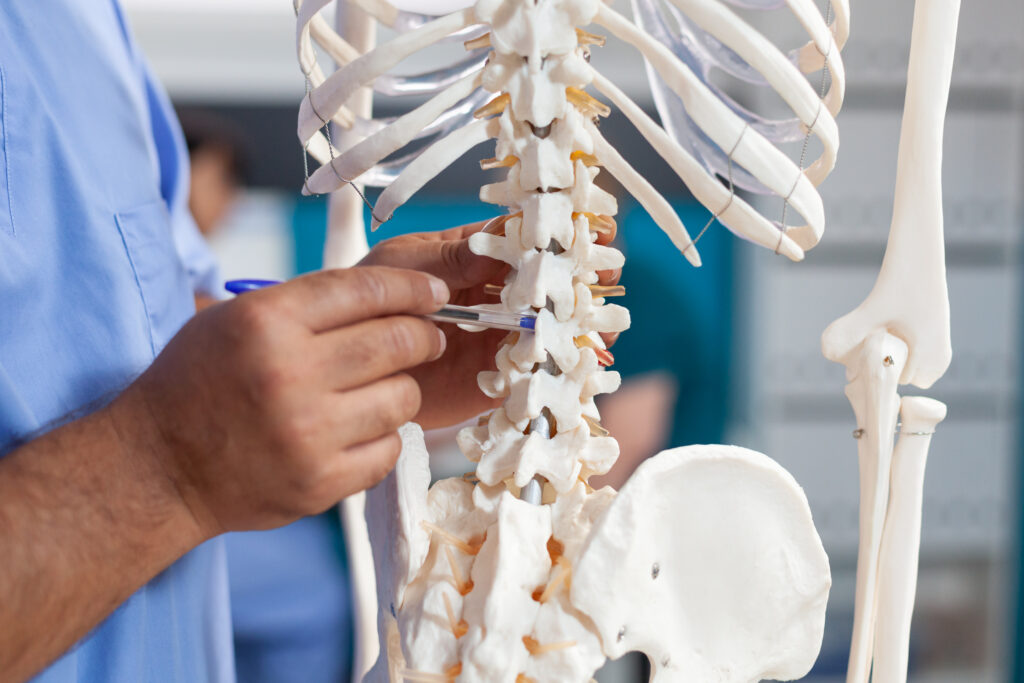Degenerative scoliosis, a condition marked by the abnormal curvature of the spine, is often perceived as a debilitating ailment. However, it can be successfully treated with the right approach and persistence. Let’s explore the journey of a patient who managed to live an active, fulfilling life despite having severe scoliosis, emphasizing that treatment and proper care can yield significant improvements.
A Delayed Diagnosis
Many people believe that scoliosis is a condition diagnosed early in life. However, our patient’s story begins quite differently. Despite showing symptoms earlier, she wasn’t diagnosed until a routine physical examination in college revealed the curvature. “The pediatrician never picked it up, and that was surprising,” she recalls. Reflecting on her adolescent years, she muses that had it been diagnosed then, she might have faced the prospect of wearing an enormous brace, akin to a body cast, for an extended period.
Life with Scoliosis
Undiagnosed scoliosis didn’t stop her from leading an active life. She played rugby and football in college, managing her condition with a degree of normalcy. However, the real challenges began post-college, especially after the birth of her first child. “As each child came, the back pain increased,” she says, noting that the pain became particularly problematic about ten years ago. Despite this, she didn’t seek specialized treatment until six months prior to our interview.
Increasing Discomfort and Postural Issues
The constant, albeit low-grade, pain became a part of her daily life. However, it was not just the pain but the postural deformities that pushed her to seek help. “My rib cage was pushing forward, giving me an appearance of having extra skin,” she explains. It wasn’t just cosmetic concerns; the loss of height was another alarming sign. “I lost another inch of height, and that made me realize something was seriously wrong.”
Professional and Personal Limitations
Her career as a psychiatrist and researcher required long hours of sitting, which exacerbated her pain. Commuting for an hour each way added to the discomfort. Standing for prolonged periods was also a challenge. “I couldn’t be in the car for more than two hours without needing to stop and walk around. Standing in line for more than an hour was unbearable,” she explains.
Finding Effective Treatment
Upon seeking treatment, she found a supportive and positive environment that significantly impacted her well-being. “The machines here have really made a difference in my pain levels, reducing it from a constant three or four to a one or two,” she shares. Her spinal curve measured 67 degrees, categorizing her as a surgical candidate. However, after researching the high complication rates and potential for repeated surgeries, she decided against it. “I preferred treatment over surgery, with its risks and long recovery periods,” she asserts.
Embracing the Brace and Exercises
A critical part of her treatment was wearing a brace and performing specific exercises. Initially reluctant, she soon realized the benefits. “The scoliosis brace adds stability and helps me feel straighter and stronger,” she notes. Integrating the brace into her daily routine, she wears it for about seven to eight hours, mainly in the mornings. This adjustment required a shift in her breathing from chest to stomach, but over time, she adapted. “I can even sleep through the night with it on without any issues,” she adds.
Remarkable Improvements
The physical improvements were not just internal but visible. Comments from friends and family about her improved posture validated her efforts. “My husband noticed the change and was a big motivator for me to continue the treatment,” she says. Her clothes fit better, and she feels taller and straighter, which has boosted her confidence.
Living an Active Life
Despite the severe curvature of her spine, she has managed to maintain an active lifestyle. “I completed a seven-day hike in Peru to Machu Picchu, hiking six to seven hours a day and reaching altitudes of 15,000 feet,” she proudly recounts. She attributes this achievement to the treatment, which significantly reduced her pain and enhanced her physical capabilities.
Degenerative Scoliosis: A Message to Others
Her message to others suffering from scoliosis is clear: start treatment early. “If this treatment had been available when I was 16 or 17, it could have corrected the curve when it was still manageable,” she believes. She encourages young people not to wait, emphasizing that early intervention can make a substantial difference.
Concluding Thoughts
Degenerative scoliosis can be a challenging condition, but with determination, the right treatment, and a positive mindset, it is possible to lead a fulfilling life. Regular exercises, adherence to treatment protocols, and the use of supportive devices like braces can mitigate pain and improve posture. This story is a testament to the fact that even with a significant spinal curvature, one can remain active, pursue passions, and maintain a good quality of life.
Also read: At What Age Does Scoliosis Stop Progressing?
